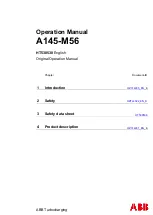
headline bars
tabs
con
tinua
tion tabs
not
es
w
ar
nings
9
headline bars
tabs
con
tinuation tabs
notes
war
nings
CONNECTING Y
OUR
BA
TTER
Y
headline bars
tabs
continuation tabs
notes
warnings
WARNING!
A SPARK NEAR A BATTERY MAY CAUSE A BATTERY EXPLOSION!
Battery chargers may get hot during operation. DO NOT set
charger on flammable materials like carpeting, upholstery, paper,
cardboard, etc. Charger may damage leather and plastic.
FPO
FOLLOW THESE STEPS WHEN BATTERY IS OUTSIDE VEHICLE.
WARNING: A SPARK NEAR THE BATTERY MAY CAUSE A BATTERY
EXPLOSION. TO REDUCE THE RISK OF A SPARK NEAR THE BATTERY:
•
Check polarity of battery posts. POSITIVE (POS, P, +) battery post
usually has a larger diameter than NEGATIVE (NEG, N, –) post.
•
Connect POSITIVE (RED) charger ring terminal to POSITIVE (POS, P, +) post
of battery.
•
Attach at least a 60 cm (24˝) long 6-gauge (AWG) insulated battery
cable to NEGATIVE (NEG, N, –) battery post.
•
Position yourself and free end of cable as far away from battery as
possible – then connect NEGATIVE (BLACK) charger ring terminal to
free end of cable.
•
Do not face battery when making final connection.
•
When disconnecting charger, always do so in reverse sequence of
connecting procedure and break first connection while as far away
from battery as practical.
•
A marine (boat) battery must be removed and charged on shore. To
charge it on board requires equipment specially designed for marine use.










































